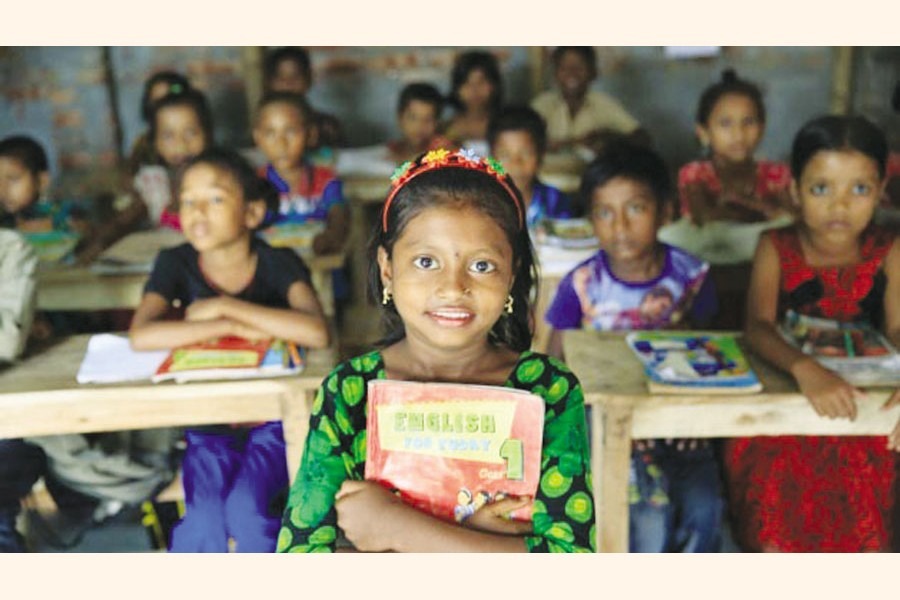
Published :
Updated :

Dhaka city has a total of 342 government-run primary schools. No matter where these public schools are located in the capital, they have seven things in common. 1. The schools have no permanent posts for clerks, cleaners and security personnel. 2. With a student-teacher ratio of 54:1, they have an acute shortage of teachers. 3. Question marks often remain over the quality of teaching and exam results of the students. 4. School buildings are in decrepit condition with a few usable classrooms, which lack basic education materials such as whiteboards, desks, chairs, etc. In some areas, local influentials illegally occupy school building and land and use them for commercial purposes. 5. Classrooms are not clean and toilets are filthy. 6. There is hardly any extracurricular or sports activities for students of these schools. 7. Only those who cannot afford expensive private schools send their children to these schools.
Like Dhaka, the majority of government schools in the country have poor environment of education. There are many primary schools in rural Bangladesh, which are operated entirely only by one or two teachers. Consequently, most people now prefer private schools. But in the absence of government regulation, the ever-increasing number of private schools and kindergartens offer below average education at high fees. As a result, many students are forced to take up private tutoring. The share of households paying for private tutoring in Bangladesh increased in rural areas from 28 per cent in 2000 to 54 per cent in 2010, and in urban areas from 48 per cent to 67 per cent, according to a study conducted by UNESCO's Global Education Monitoring Report and BRAC. Private tutoring can begin at an early age. In Bangladesh, 20 per cent of pre-primary school children attend private tutoring, the study found. It also said the government of Bangladesh spent less than 2.5 per cent of its annual GDP on the education sector throughout the 2010s. This is considerably lower than the recommended 4 per cent and has left our education struggling and led households to spend more on education.
Just some years ago, Indian capital New Delhi had a similar kind of neglected government school system as we now have in our country. The Aam Aadmi Party's leader, Arvind Kejriwal, who became Delhi's chief minister in 2015, said he wanted to revamp the school system to a point where ministers would feel comfortable sending their children to public schools. And he has found success by investing heavily and bringing structural reforms to overhaul the government school system, accessed mainly by the poor. As reported by the New York Times, more than 250,000 students had left private schools in between 2015 and 2021 to attend Delhi's government schools. And almost cent per cent students of these institutions passed high school final exam. Many states of India are now pushing to adopt the Delhi model of government education system. In Bangladesh, many think that the condition of government schools can never be improved and quality education is only provided in private schools. But the Delhi model has proved this wrong and showed us what political will and investment can do to overhaul a system of mismanagement.
bjoy177@gmail.com


 For all latest news, follow The Financial Express Google News channel.
For all latest news, follow The Financial Express Google News channel.